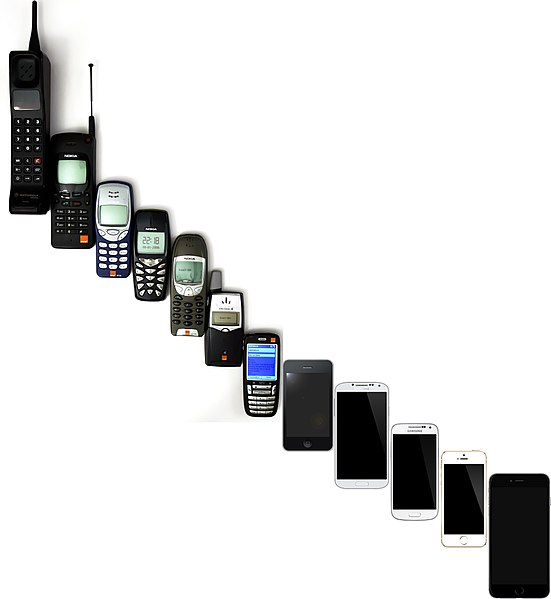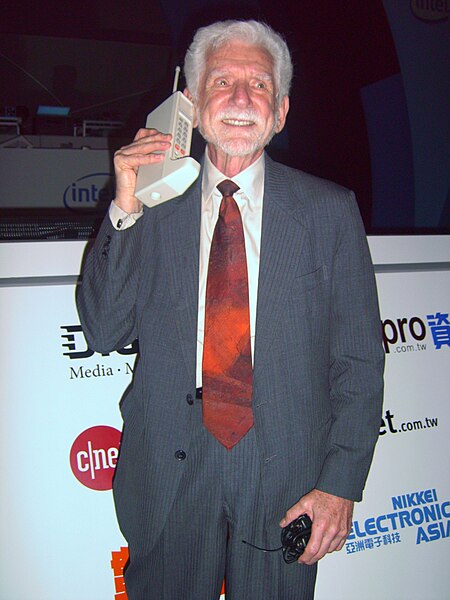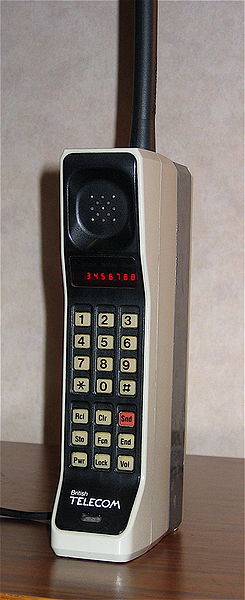A SIM card is an integrated circuit (IC) intended to securely store an international mobile subscriber identity (IMSI) number and its related key, which are used to identify and authenticate subscribers on mobile telephone devices. Technically the actual physical card is known as a universal integrated circuit card (UICC); this smart card is usually made of PVC with embedded contacts and semiconductors, with the SIM as its primary component. In practice the term "SIM card" is still used to refer to the entire unit and not simply the IC.
A typical SIM card (mini-SIM with micro-SIM cutout)
T-Mobile nano-SIM card with NFC capabilities in the SIM tray of an iPhone 6s
4-by-4-millimetre (0.16 in × 0.16 in) silicon chip in a SIM card which has been peeled open. Note the thin gold bonding wires, and the regular, rectangular digital memory areas.
The memory chip from a micro-SIM card without the plastic backing plate, next to a US dime, which is approx. 18 mm in diameter
A mobile phone is a portable telephone that can make and receive calls over a radio frequency link while the user is moving within a telephone service area, as opposed to a fixed-location phone. The radio frequency link establishes a connection to the switching systems of a mobile phone operator, which provides access to the public switched telephone network (PSTN). Modern mobile telephone services use a cellular network architecture, and therefore mobile telephones are called cellphones in North America. In addition to telephony, digital mobile phones support a variety of other services, such as text messaging, multimedia messaging, email, Internet access, short-range wireless communications, satellite access, business applications, payments, multimedia playback and streaming, digital photography, and video games. Mobile phones offering only basic capabilities are known as feature phones ; mobile phones that offer greatly advanced computing capabilities are referred to as smartphones.

Two decades of evolution of mobile phones, from a 1992 Motorola 8900X-2 to the 2014 iPhone 6 Plus
Martin Cooper of Motorola, shown here in a 2007 reenactment, made the first publicized handheld mobile phone call on a prototype DynaTAC model on 3 April 1973.
The Motorola DynaTAC 8000X. In 1983, it became the first commercially available handheld cellular mobile phone.
Dupuis and Haug during a GSM meeting in Belgium, April 1992








